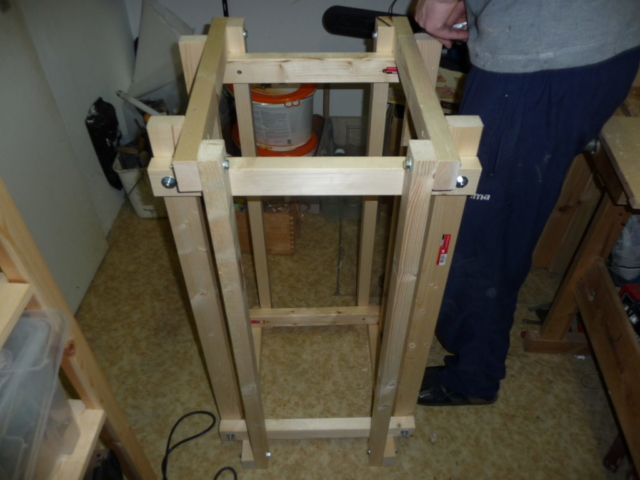When’s the last time that you’ve built a frickin’ CATAPULT, hu? Yes, that’s what I thought.
I will tell you about the time I did build one with my brother, though. Back then, he wasn’t yet, but now he is a certified master carpenter. He’s been a little woodworm his whole life, though, so when I received a call a couple of weeks before the Christmas vacation of 2009 and he asked me if I was interested in building a trebuchet together with him during the vacation, I knew it was gonna be bonkers.
Some background first. Back then, we were both still heavily engaged with our local scouting club. A commission on regional level had decided a few weeks earlier, to organise a camp for leaders from all scouting clubs in the region under the motto of a tourney in honour of St. George, the patron of the biggest scouting organisation in Germany. During the camp, teams would be chosen from the participants and then they’d have to complete tasks to finally crown the most able team of them all. Also, the better they did the tasks, the more gold coins they would earn during the tourney. Those could be spent on the final task: building a catapult. We had a couple of sponsors, who donated lots of building material, which could be bought by the teams for the collected gold coins. All in all, an epic concept, I mean, when do you ever build a catapult, right??

But here’s the thing. The organisers of this camp, my brother being one of them, wanted to take part as a team in the tourney, and they wanted to CRUSH the competition. So, naturally, they needed to cheat and bring a well thought out catapult to the tourney. That’s where this story starts off.
As crazy as it may sound to you, back when I received that call, it didn’t even occur to me that this might be one of the most epic things I’ve ever done. It was just another thing we did. When I came home to my parent’s place for the Christmas vacation, my brother had already prepared a scale model of what he thought would be a good approach. I’m sorry I don’t have any videos or pictures of this, but imagine a toy sized trebuchet.
But Thommy, what just IS a trebuchet, I hear you thinking, I have never heard of such a thing, since I am not a nerd imbued with medieval and fantasy knowledge. Alright. That’s what a trebuchet used to look like, a couple centuries ago:


Those things were used to take down castles before the invention of gunpowder and cannons. Those things were HUGE! The principle was simple and relied on a combination of leverage and acceleration by a sling.
The counterweight, which could be a couple of metric tonnes (!!) would be attached to the short part of the catapult’s arm, on the longer end would be a sling, in which a stone block, weighing dozens of kilograms, would be placed. Upon release, the counterweight would pull down and the projectile would be propelled as with a giant slingshot. They took a long time to set up, were a hassle to transport and pretty inflexible. But to grind thick walls to dust and demoralise the inhabitants, nothing does the trick like a 100 kg ball of stone every half hour. Or… you know… why not throw dead cows at the enemy. Yes. They did that. Biological warfare was a thing, even in the 12th century.
Anyhow, if you want to know more about those awesome pieces of engineering, check out the wikipedia page on them. We’re here for the much smaller, but not less epic version, that we built back then.
We spent most of the days leading up to Christmas in hardware shops, stocking up on 4×6 cm timber beams, screws, ropes, industrial glue and everything else you might need to make this thing real. An uncle provided us with the threaded metal bar which would be our hinge, on which the arm would turn. Thanks to the threads, we could center the arm with nuts, which was extremely helpful. But I’m getting ahead of myself. Altogether, we probably spent around 100 euro’s on material, but if we had had to buy a solid metal rod, that would have probably been way more.
So the toy-sized model was a huge succes already. We were able to shoot a regular eraser all across my parents’ living room, or about six meters. The proportions of course weren’t the same as with the final product, on a small scale it is much easier to get a relatively huge counterweight into play. The bigger you go, the more forces are involved and the more dangerous it gets, of course.
The building itself took about two days. We first made a frame for the catapult to stand on, and then made the poles, that the arm would rest on. After that, the arm itself and a cage for the counterweight. We were going to use old concrete garden tiles, weighing in at around 12.5kg each… The cage could fit 10. Here are some impressions from the building process. The bottom frame exactly fit into the small hobby room in our parents’ house, which was fortunate, since it was pretty cold outside and we didn’t have anywhere else to build it.
And now that I’ve piqued your interest, I’ll stop and continue this another time 😉
Let met tell you, it’s worth the wait!









